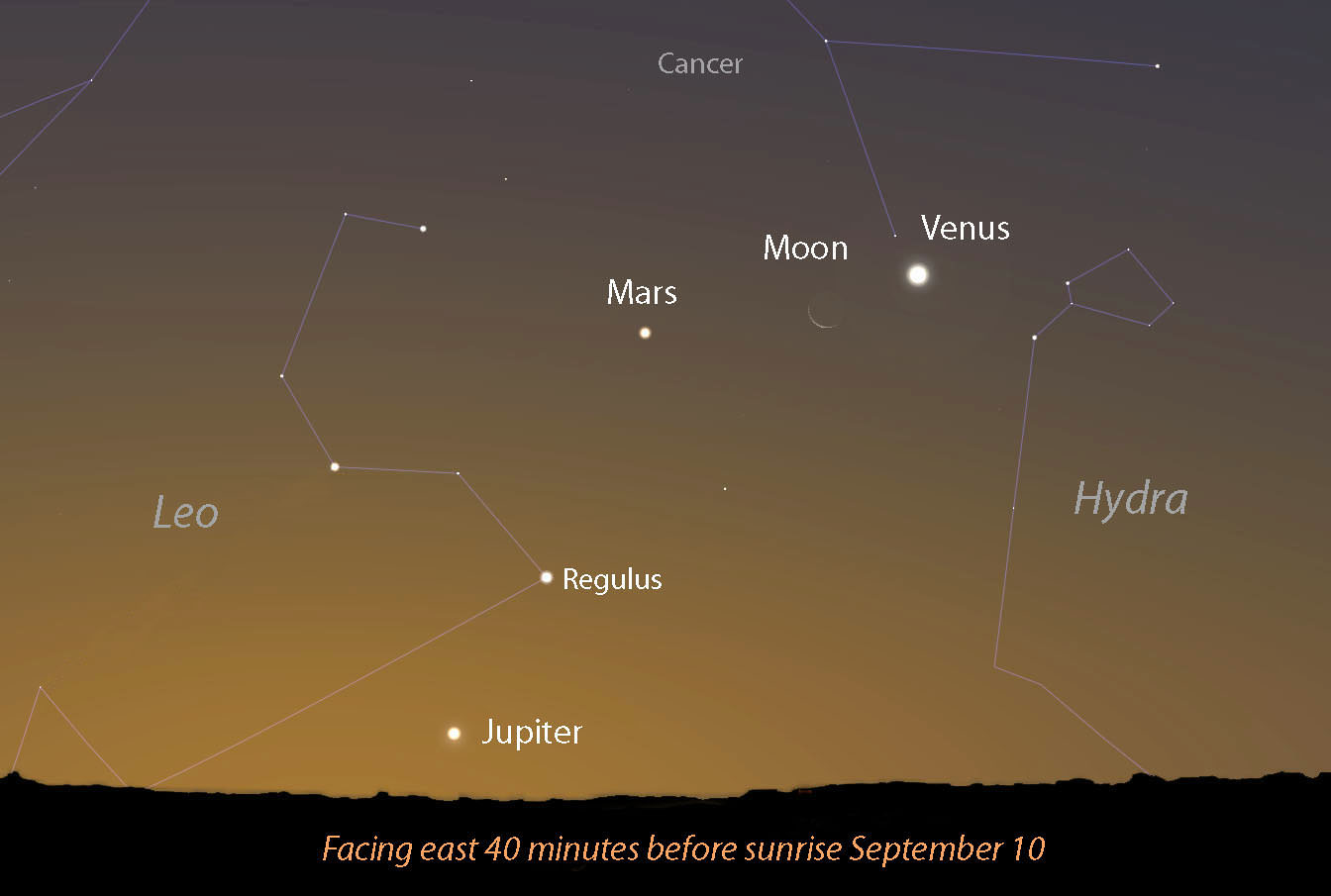The dawn sky's where it's happening. With Saturn swiftly sinking westward at dusk, bright planets have become scarce in the evening hours. But if you get up early and look east, you'll discover where the party is. Venus, Mars and now Jupiter have the dance floor.
[caption id="attachment_122272" align="aligncenter" width="537"]
Tale of two crescents. A montage of the thick crescent Moon and crescent Venus photographed earlier this month. Credit: Tom Ruen[/caption]
What's more, the sky gods have seen fit to roll a thin crescent Moon alongside
Thursday morning (Sept. 10). This lovely twinning of crescents is best seen about 75 minutes to an hour before sunrise. All you need is a pair of 10x binoculars to see the peewee Venusian version. Its waning crescent phase closely mimics the Moon's.
From the U.S., the separation between the two will vary from 3° for the East Coast to 4.5° for the West. European and African skywatchers will witness the actual conjunction with the Moon gliding 2.5° north of the planet.
[caption id="attachment_122275" align="aligncenter" width="580"]
Venus is very bright, making it easy to see in the daytime if you know where to look. Try using the thin Moon soon after sunrise (7:30 a.m. local time shown here) to spot Venus. Aim and focus your binoculars on the Moon, then glide up and to the right to find Venus. If you succeed, lower the binoculars and see if you can spot it without optical aid. Source: Stellarium[/caption]
Much fainter Mars, checking in at magnitude +1.8, lies 6° to the left or east of the Moon. It thrills me to see Mars begin a new apparition with its return to the morning sky. Next year, the Red Planet
on May 22 in the constellation Scorpius, when it will be brighter than Sirius and more than 18 arc seconds across, its biggest and closest since 2005.
Remember Jupiter? We lost it in the solar glare more than a month ago, but if you can find a location with a nice, open eastern horizon, you can welcome the ever-jovial planet back Thursday. Bring binoculars just in case! Jove's only a few degrees high in moderately-bright twilight.
[caption id="attachment_122276" align="aligncenter" width="580"]
The bright sunlit crescent contrasts with the darker lighting of twice-reflected light contributed by own planet. Credit: Bob King[/caption]
When you look at the Moon Thursday, most of it will be illuminated not by sunlight but by Earth-light called
. This smoky, dark glow results from sunlight bouncing off the globe into space to softly light the otherwise shadowed portion of the Moon. The effect is most pleasing to the eye and remarkable in binoculars, which reveal lunar seas and even larger craters shrouded in blue-dark. Don't miss it!
 Universe Today
Universe Today
